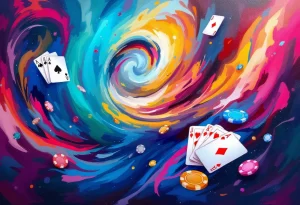Visual Storytelling: More Than Just Pretty Pictures
Storytelling through graphic design isn’t simply about slapping some nice-looking visuals together. It’s a deliberate process, a conscious effort to craft a narrative arc that resonates with the audience. Consider the classic movie poster. It’s not just a collection of actors’ faces. It’s a carefully constructed composition designed to hint at the film’s plot, tone, and key themes, all within a single, arresting image. Think about the iconic “Jaws” poster. Simple, terrifying, and instantly communicates the core conflict of the film. That’s visual storytelling at its finest.
And its not just posters. Think about the design of a website. The navigation, the color scheme, the way information is presented—all of these elements contribute to the user’s experience, guiding them through a narrative journey. A well-designed website anticipates the user’s needs, answers their questions, and ultimately leaves them feeling satisfied. A poorly designed one? Well, that’s like reading a novel with missing chapters. Frustrating, to say the least.
Narrative Techniques in Graphic Design
So, how do we, as designers, actually do this? What are the tools and techniques we can use to craft compelling visual narratives? Well, let’s start with some of the basics.
- Composition: This is the foundation of any visual story. How you arrange elements on the page or screen will dictate how the viewer’s eye moves through the design. Leading lines, the rule of thirds, and the use of negative space are all powerful tools in your compositional arsenal.
- Color Theory: Color is deeply emotive. It can evoke feelings of joy, sadness, anger, and everything in between. Understanding color theory and how different colors interact is crucial for setting the tone of your story.
- Typography: Fonts have personalities. A playful, hand-drawn font will tell a very different story than a stark, geometric sans-serif. Choose your fonts carefully to ensure they align with the overall narrative.
- Imagery: Photographs, illustrations, icons—all of these can be powerful storytelling tools. But remember, images should always serve the narrative, not distract from it.
I remember when I was teaching at Yale, I had a student who insisted on using a Comic Sans-esque font for a project about the Holocaust. I almost had a heart attack! It was a stark reminder that even the most technically proficient design can fail if it doesn’t respect the gravity of the subject matter.
Examples of Successful Visual Narratives
To illustrate these principles, let’s look at a few examples of graphic design that successfully tells a story.
- Brand Identity: Think about the Apple logo. Simple, elegant, and instantly recognizable. But it also tells a story of innovation, sophistication, and a relentless pursuit of perfection.
- Editorial Design: A well-designed magazine or newspaper can guide the reader through a complex story, using layout, typography, and imagery to create a cohesive and engaging reading experience.
- Infographics: Infographics are a fantastic way to present complex data in a visually compelling format. By using charts, graphs, and illustrations, designers can transform dry statistics into engaging narratives.
The Power of Empathy
Ultimately, the key to effective storytelling through graphic design is empathy. You need to understand your audience, their needs, their desires, and their pain points. Put yourself in their shoes and ask yourself, “What story do they need to hear?” Only then can you begin to craft a visual narrative that truly resonates.
It’s a challenging process, no doubt. But it’s also incredibly rewarding. Because when you get it right, when you create a design that truly connects with people on an emotional level, you’re not just creating art; you’re creating something meaningful. You’re telling a story that matters. And in today’s world, where attention spans are shorter than ever, that’s more important than ever. Now, if you’ll excuse me, I have a design to finish. This article is due tomorrow!








